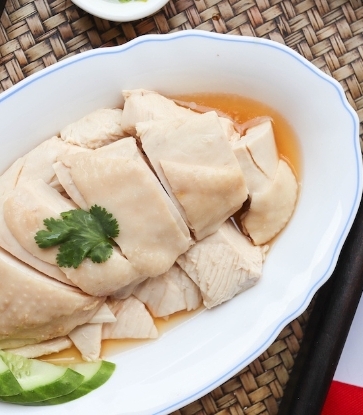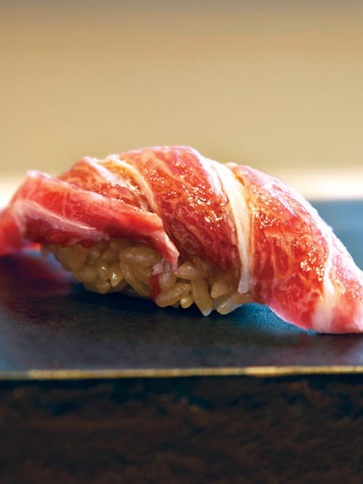Outside of Japan, most people probably are only really familiar with sushi and then maybe ramen, if they are asked what they know about Japanese food. A few others might get a mention – tempura, teriyaki, gyoza – but sushi and ramen dominate the world's imagination when it comes to Japanese food.
But when you visit Japan, it is hard not to be amazed by the country's diverse culinary ecosystem, with highly specialised restaurants supervised by craftspeople dedicated to a single technique. One that is almost universally beloved in Japan but relatively obscure beyond its borders is yakitori.
For the uninitiated: yakitori translates quite simply to “grilled bird”, with pieces of chicken on a stick, grilled. It is a subset of kushiyaki, a larger category which includes other meats, seafood, and vegetables grilled on a stick. And what could be a more primal expression of the human desire to cook than the simple formula of food plus fire? However, yakitori is deceptively simple, because, as any chef will tell you, simplicity means that the cook has less room to cover up any mistakes.

Typically, yakitori consists of a few different preparations, but mainly is seasoned with salt or tare, a soy-based sauce often incorporating dashi (a broth based on smoked bonito flakes and kombu seaweed), vinegar, and sake. The cooked chicken is often basted or glazed with this sauce, slowly infusing the tare with grilled meat’s fat and aroma. The grilling should be over charcoal, and ideally the ultra-hard binchōtan charcoal. Unlike ordinary charcoal, which is often processed into uniform black lumps, binchōtan is made from whole pieces of oak, but not just any oak. It has to be Quercus phillyraeoides, known in Japanese as ubame, a regional speciality from Wakayama Prefecture near Osaka. The wood’s density, according to the lore, creates incomparable heat with longevity, allowing for an evenly high temperature at the grill.
Cuts are taken from the whole bird for a range of flavours and textures beyond the run-of-the-mill boneless, skinless chicken breast. Standards include familiar sights like sasami (breast), tebasaki (wing), and kashiwa (thigh), often alternated with bits of Japanese leek (negima), as well as delicate chicken meatballs known as tsukune. Innards are also well represented, like reba or chigimo (liver), hatsu (heart), and sunagimo (gizzard). In addition to salt and tare, a few other toppings often find their way onto the skewers, like shiso leaf and umeboshi (pickled plum). But yakitori options seem almost limitless, with skins, tails, combs, and wattles all being represented in various permutations.

In Bangkok, among yakitori's finest representatives is MICHELIN Bib Gourmand 2022 recipient Shirakone Tori-Tama, behind an unassuming door – as so many of the best Japanese restaurants are – in Ekamai's Park Lane shopping complex. Here, in a small space attached to a popular sake bar (pairings are sometimes available, as few things go together as well as yakitori and sake), Tokyo-born Chef Toru Tanaka crafts a range of dishes using the chicken from beak to tail.
Chef Tanaka's story starts, like so many chefs, with an early inspiration. His was a local yatai, or Japanese street-food stall, selling yakitori. So in his 20s, he decided to seriously pursue the art of yakitori, apprenticing at the renowned Toriyoshi restaurant in Tokyo, performing mundane tasks like dishwashing and taking orders for over a year before being allowed to touch a chef's knife. And after making the rounds, working at some of Tokyo's top yakitori restaurants, he was sent to Bangkok.
Now to his yakitori. His process begins with the charcoal. Authentic binchōtan cannot actually be imported into Thailand, so Tanaka-san had to seek an alternative. Working with locals, he found a relative to the ubame oak on mountaintops in the far north of Thailand that would make a suitable substitute to fuel his grills. He primes the charcoal for 30 minutes before breaking it up with a hammer to get the evening's service started. When he breaks up each piece with a hammer, he seems more blacksmith than chef. The test, he explains, is in the sound – when hit, it should not sound like wood at all. Instead, each piece breaks apart with a metallic clang.

As with the charcoal, every component is sourced locally from Thailand but inspired by the best Japanese traditions. Chef Tanaka has been working with agricultural experts from Japan to adapt Japanese produce to a tropical climate, growing his own vegetables in Nan Province. He is similarly rigorous in sourcing his chickens, where he tests the meat by first tasting the organs – the liver, the gizzard, and the intestines – to see if they meet his standards, claiming that if those are good, it logically follows that the rest of the bird should be suitable as well.
When it comes to preparing the bird, the varieties are dizzying, helpfully divided on the menu into ordinary, rare, and very rare parts, and priced accordingly. Skewer sets are available, and especially helpful for the uninitiated. Even the ordinary parts will seem out-of-the-ordinary to someone raised on supermarket cuts, with skewers like akiresu (Achilles tendon) and engawa (ribs) featuring prominently, along with the poetically named kokoro no kori – meaning “pulling the heart,” an idiom roughly translating to “regret.” This refers to the muscle between the heart and the liver, a slightly gamey piece that seems to split the difference between ordinary meat and innards.

When the menu gets into the rarer items, things become even more interesting, with cuts like sori (called the oyster, it is the small piece from the back of the thigh, much-prized in French cuisine as well), bonjiri (the so-called “bishop's nose”, the fatty bit at the base of the bird's tail), and the truly astonishing chouchin. This means “lantern”, and looking at it, the comparison is easy to make, except that the “lantern” is an unlaid egg yolk, and the “wire” it hangs from is (with apologies to the squeamish) the chicken’s fallopian tube. While that may put the reader off, the flavour is incomparable, providing a pure and refined essence of egg, with a dense and silky texture that lingers in the mouth as the MICHELIN Inspectors acclaim, “..beak-to-tail cooking is celebrated, where various chicken parts are prepared in several ways to create countless dishes that are full of flavour.”
Each skewer is laid in front of the guest, a pure expression of a few basic elements – meat, seasoning, wood, and fire – somehow both primaeval and elegant. Like all great cooking, the whole is so much more than the sum of its parts.






















